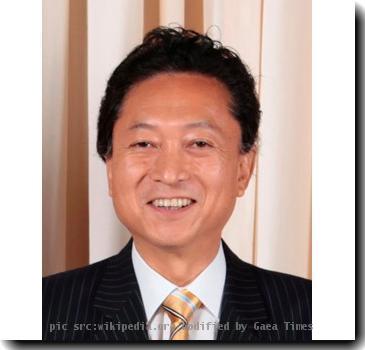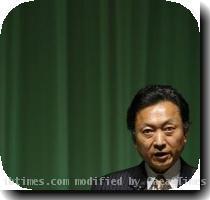It needn’t end this way: Japanese city’s novel approach cuts suicides dramatically
By Tomoko A. Hosaka, APFriday, December 18, 2009
For suicidal Japanese, help is finally at hand
KURIHARA, Japan — Four years ago, suicides in this northern city were running at nearly double the national rate, and as the global financial meltdown hit Japan, they might have been expected to go even higher.
But Kurihara has fought back, with impressive results.
The reason is simple — a recognition that Japan’s famously high suicide rate is not so much a feature of Japanese culture, drawing from samurai or kamikaze traditions, but is uniquely woven into the health of the economy.
So instead of treating the suicidal just for depression, as has long been the practice, the city offers financial and legal counseling, along with “hope loans” — or “nozomi” loans in Japanese — to get the needy out of debt.
The suicide rate in Kurihara fell from 48.6 per 100,000 people in 2005 to 27.5 in 2007, and city officials expect it to decline again this year, even as the rate rises nationwide.
Now other municipal governments are looking to this city of 80,000 for inspiration.
Makoto Ishikawa believes his life was saved by a nozomi loan.
The 47-year-old has an office job and also runs a family rice farm. Last year, he began drowning in debt to pay his two children’s college fees and buy new farm equipment.
“So many bills began piling up,” he said. “I realized I needed help.”
His plight sounds much like that of millions worldwide in these tough times, but Japan is different. Here banks set stringent conditions for loans, forcing borrowers to rope relatives and friends into guaranteeing repayment.
This can plunge a defaulter into extreme guilt and despair, says Yasuyuki Sawada, lead researcher on a study published last year by University of Tokyo that showed a particularly high correlation between the suicide rate and economic indicators such as gross domestic product.
Yasuyuki Shimizu, a leading anti-suicide campaigner, says: “Japan is a society in which the weak are beaten down, and they are beaten down more quickly than other places. Japan is not an easy place to live.”
Japan’s economy has languished since its economic heyday in the 1980s, but the high suicide rate tended to be associated, particularly by foreigners, with the samurai ritual of hara-kiri (self-disembowelment) or with the kamikaze pilots of World War II.
“There’s a notion in the West that Japanese people commit suicide because of some noble ideal depicted in literature or art,” said Kurihara’s mayor, Isamu Sato.
“But it’s not true. People are driven to suicide because they are struggling in their daily lives. And I’d like people to know that even a little city in rural Japan can take steps to effectively tackle the problem.”
The mayor commissioned a survey of 500 residents which found a high number of middle-aged, self-employed men who had contemplated suicide because of financial strains.
Ishikawa, partly self-employed, was typical of the hard-luck cases in this city of rice farms, cattle ranches and hot springs. But rather than abandon hope, he went to the local bank, which referred him to city hall.
The city assigned him a case worker, who got him legal advice and eventually a 10-year personal loan of 8.2 million yen ($93,000), at 7.9 percent interest, which he used to consolidate his debt.
A similar loan from a consumer credit company would have charged double the interest. The nozomi loan still requires a guarantor, but he or she can be an immediate family member, such as a spouse, with the idea that the couple would work together to pay off the loan.
Ishikawa’s debt payments are about $1,000 a month — half of what he had struggled to pay before.
“The loan gave me breathing room, and now I actually have some money left over every month,” he said. “The nozomi loan saved me before my troubles drove me toward suicide.”
Japan’s suicide rate of 25.3 per 100,000 people trails only Russia, parts of Eastern Europe and, more recently, South Korea. Suicides jumped dramatically during a financial crisis in 1998, and more than 30,000 people have killed themselves every year since.
One reason the number has remained high is a sharp rise in younger victims. Sawada, the University of Tokyo researcher, attributes that trend to the growing use of unskilled contract workers, who tend to be younger and are often the first to be laid off. They bore the brunt of job cuts that pushed the unemployment rate to a record high of 5.5 percent in July.
In the first 10 months of this year, 27,644 people took their own lives, a pace that could rival the record of 34,427 deaths in 2003.
Three years ago, the parliament passed a suicide prevention plan.
“The law itself represented major progress,” said Tadashi Takeshima, director of the government’s Center for Suicide Prevention. “People began to realize that suicide was a serious problem. Before that, it’s not something that the country recognized as a national crisis.”
In September, voters ousted the long-ruling Liberal Democrats and elected reformist Yukio Hatoyama as prime minister. He promised to make suicide prevention a top priority. The government upped this year’s prevention spending by 10 percent to 15.9 billion yen ($175 million) for research, mental health services, job training for the unemployed, education, debt-counseling and help lines.
In late November it unveiled a “100-day suicide prevention plan” for the holiday season, traditionally a time when suicides climb.
The Tokyo district of Adachi began teaching public employees this year to identify and counsel potential suicide victims. It has distributed educational pamphlets and is considering expanding training to volunteer groups.
Kazu Yamazaki, who heads Adachi’s program, estimates the district has lost 1,600 people to suicide over the last decade, and expects it may take 10 years to make a difference.
“Suicide is really not something you can solve quickly,” he said.
Tags: Asia, Business And Professional Services, East Asia, Japan, Kurihara, Labor Economy, Municipal Governments, Personal Finance, Personal Loans, Suicide Prevention, Tokyo, Yukio Hatoyama

